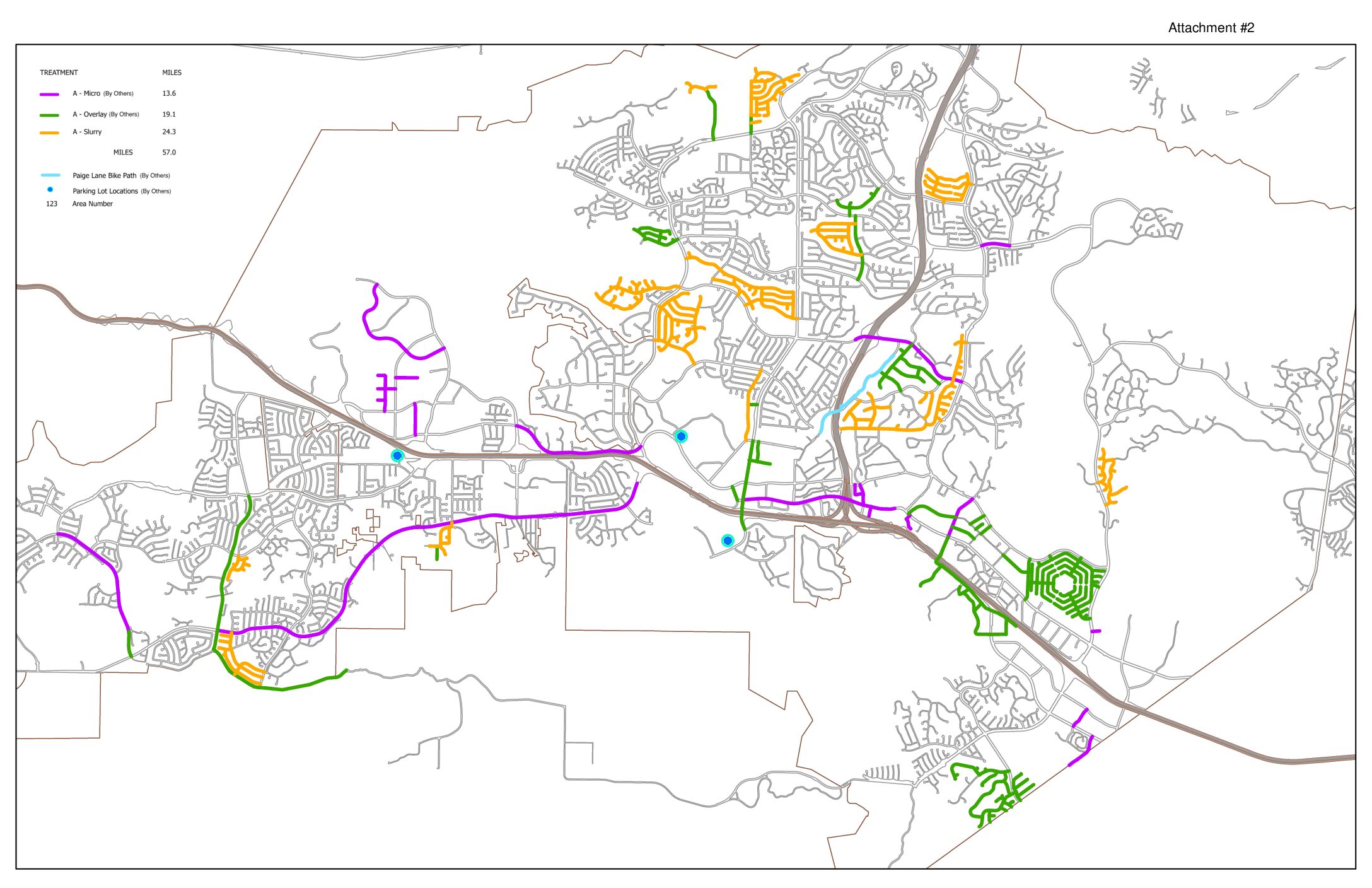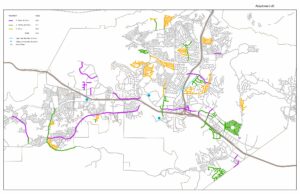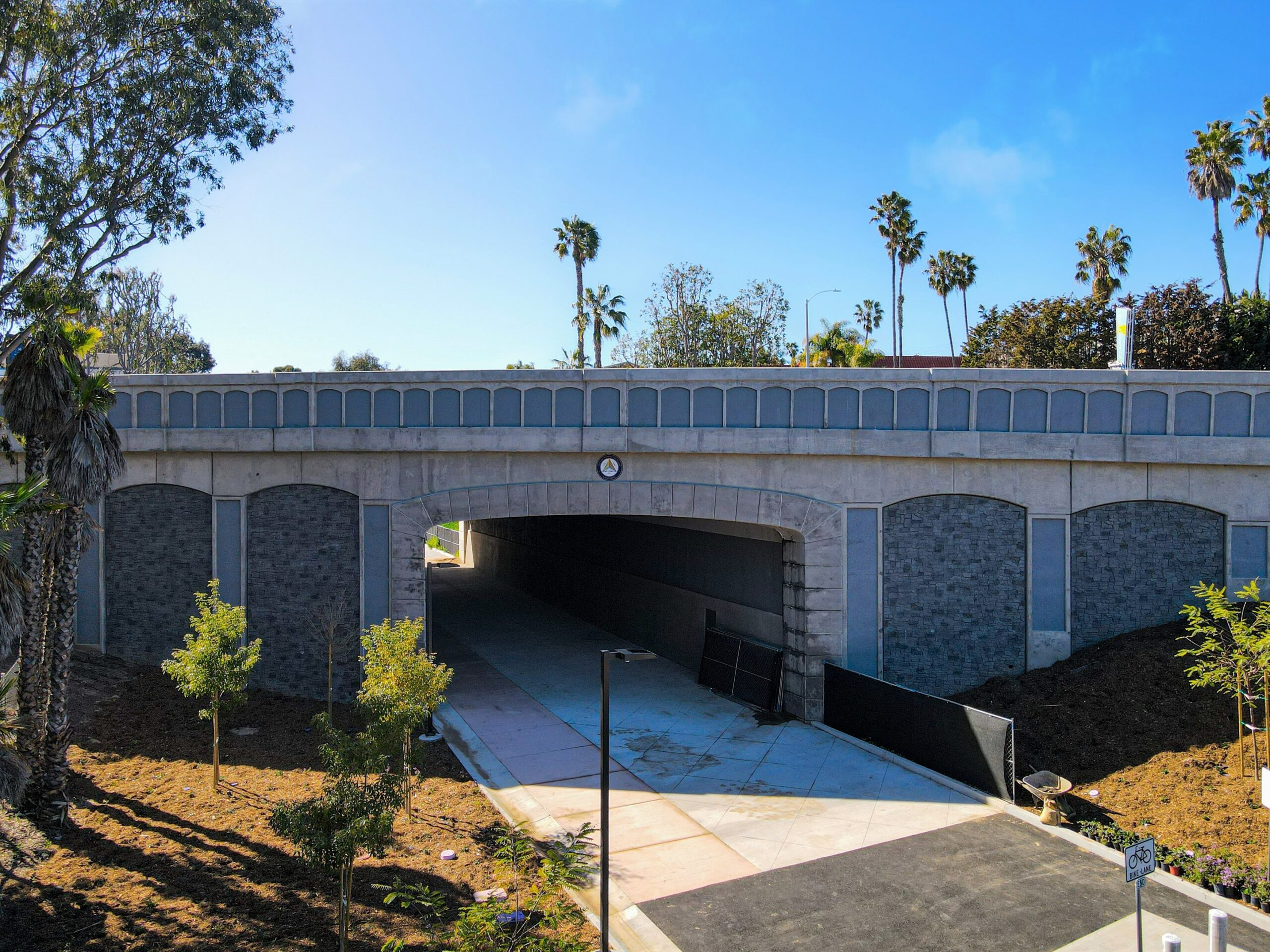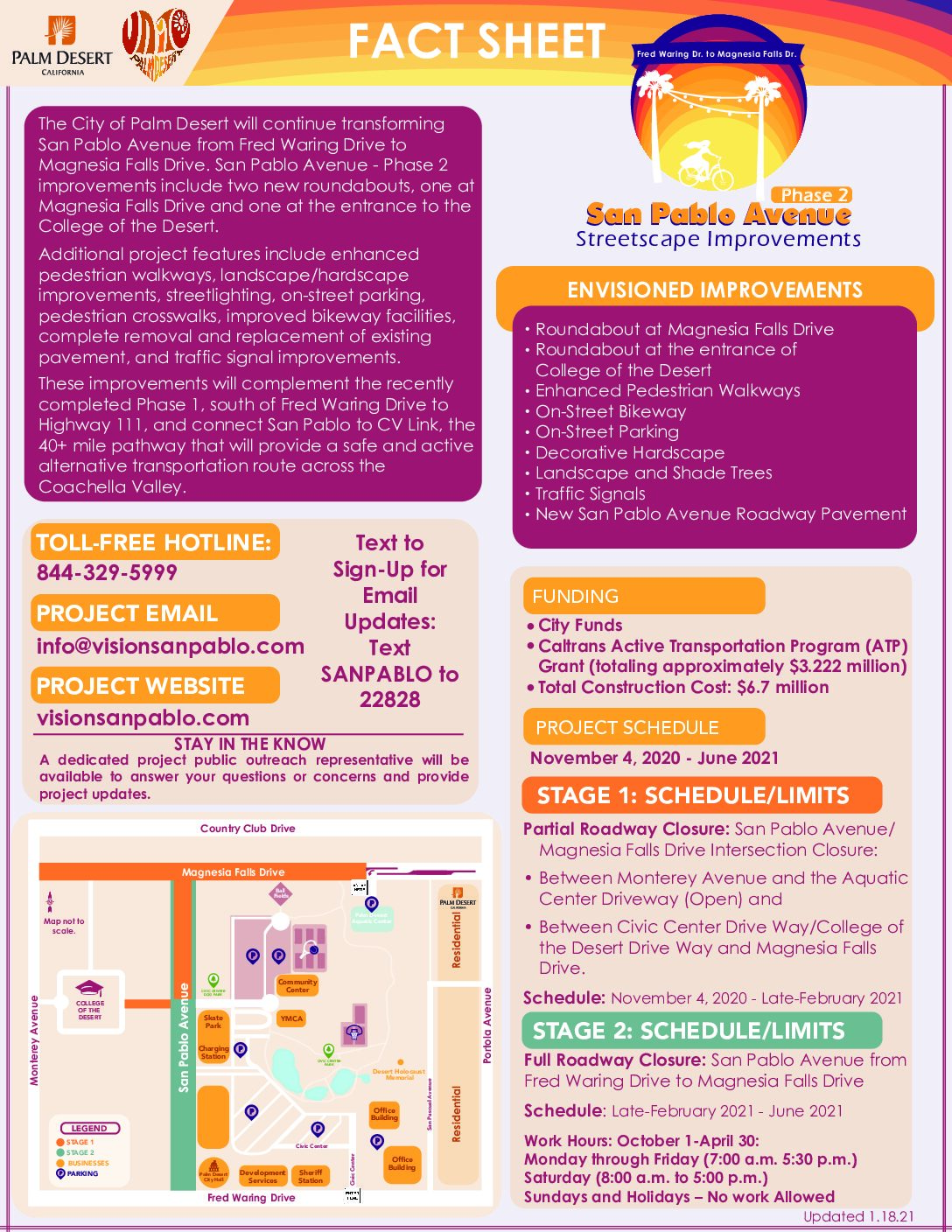2022 Pavement Overlay and Resurfacing Program
The City of Thousand Oaks, second largest city in Ventura County, uses its resources efficiently while maintaining its pavement infrastructure in a very good condition which is one of the resident’s highest priorities. The City’s maintained pavement network consists of 760 lane miles over an area of 56 square miles. The City utilizes a 5-year pavement management program to strategically preserve and rehabilitate the City pavement network in a cost-effective and consistent basis to ensure doing “the right thing to the right pavement at the right time”. The City has taken steps to significantly reduce the deferred cost for maintaining the pavement network in a very good condition by seeking additional funding and utilizing cost-effective pavement preservation and rehabilitation strategies. One of the major recent changes has been focusing more on preservation strategies to extend the pavement service life in lieu of removing and replacing the pavement. The City also implements major pavement construction contracts on biennial basis which has resulted in receiving lower bids to stretch its street maintenance dollar. The funding gap has been significantly decreased by using the Road Maintenance and Rehabilitation Program (RMRP) funding and General Fund in addition to the City gas tax revenue. The City has been successful in maintaining its overall Pavement Condition index (PCI) in mid 70s. The City has been one of the early users of recycled materials and emerging technologies in the region to maintain pavements in a sustainable and environmentally friendly manner. Since 1991, the City has used Asphalt Rubberized Hot Mix (ARHM) which includes recycled crumb rubber from recycled tires. The City uses ARHM on all overlay applications not only to be sustainable, but it also provides an enhanced ride quality and reduce tire noise as compared to conventional asphalt. In addition, this year’s program includes 1) the use of rubberized Thin Maintenance Overlay (TMO) that is applied thinner than a traditional overlay and extending the pavement life at reduced cost on residential streets, 2) the use of rubberized slurry on residential streets to preserve the pavement rather than remove and replacement, and 3) the use of Reclaimed Asphalt Pavement (RAP) Micro-surfacing on several industrial area streets with high traffic loading to preserve pavement at a reduced cost and avoid using virgin aggregates. The City’s pavement program focuses on maintaining and preserving its valuable pavement network in a cost-effective and sustainable manner. This year the city recycled approximately 125,989 tires and resurfaced 57 miles. Another significant aspect of the City pavement program was to re-stripe 4 miles of street for class II and buffered bike lanes to improve safety for all modes of transportation.





Add Comment